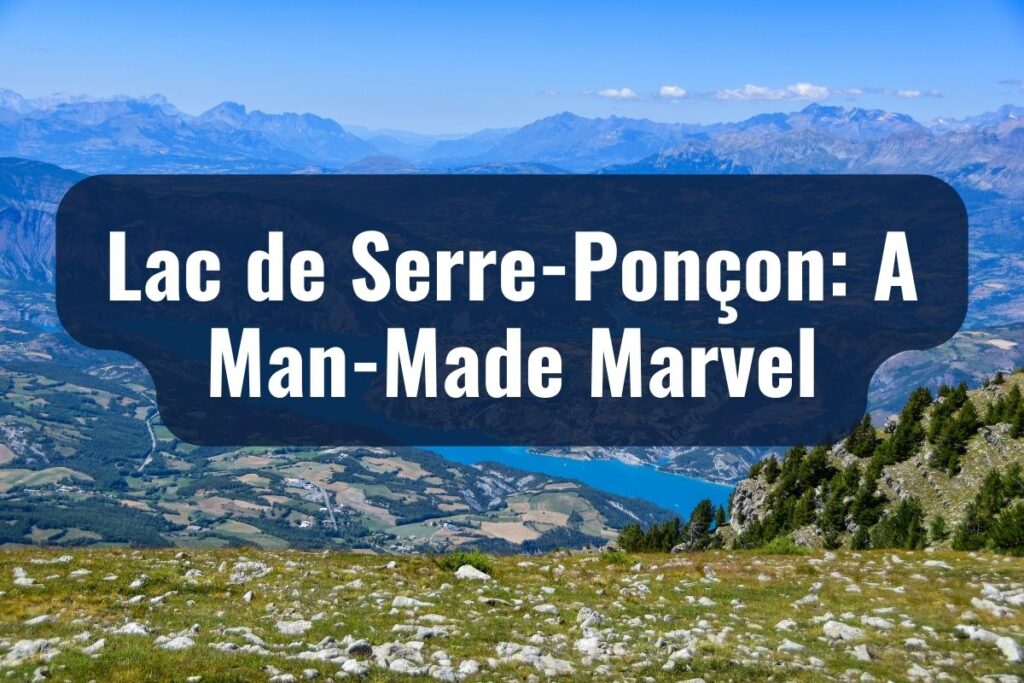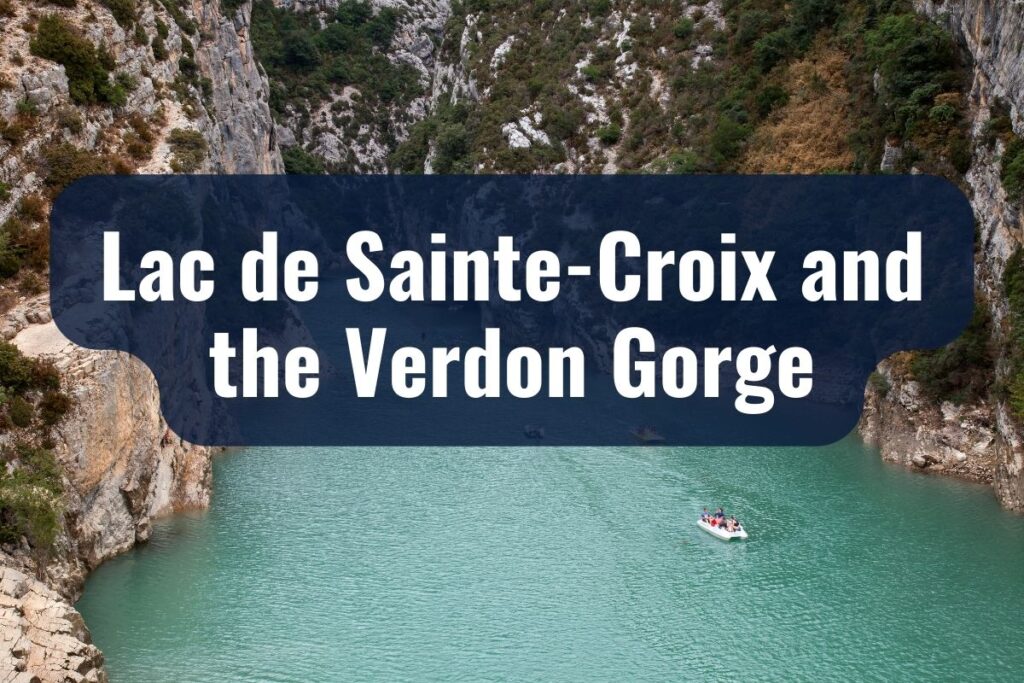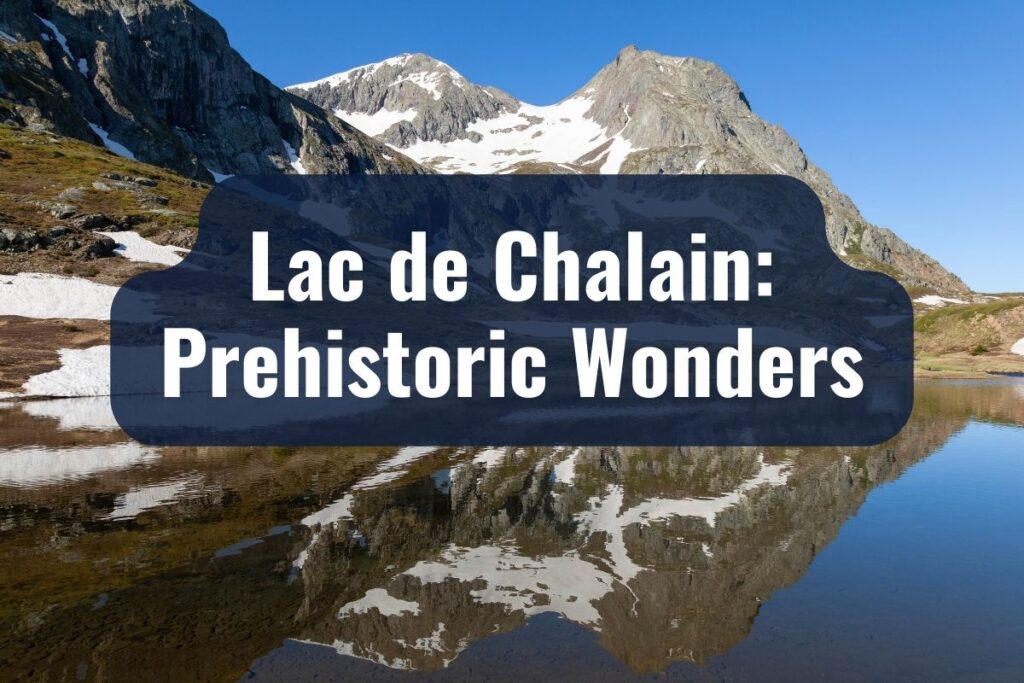Today, we take a look at some of the most remarkable lakes in France. From the serene waters of Lake Annecy in the heart of the Alps to the historic shores of Lac du Bourget, each lake has a story to tell. You will find information on how to access these lakes, the various activities they offer, and insights into their ecological and historical backgrounds.
KEY TAKEAWAYS
- Lake Annecy is Europe’s cleanest lake with rich historical and ecological significance.
- Lac du Bourget is an inspiration for poets, artists, and a vital part of local culture and biodiversity.
- Lac de Serre-Ponçon is a remarkable engineering feat with a thriving ecosystem and unique geological landscape.
- Lac de Sainte-Croix is a site of archaeological importance, offering a connection to France’s ancient history.
- Lac d’Hourtin-Carcans is a coastal retreat with a range of outdoor activities and connections to the Atlantic Ocean.
Lake Annecy
Nestled in the heart of the French Alps, Lake Annecy is a true spectacle of nature, often hailed as Europe’s cleanest lake due to its crystal-clear waters. Surrounded by majestic mountains and lush greenery, it’s a haven for both relaxation and adventure, making it a top destination for locals and tourists alike.
Location and Accessibility
Lake Annecy is located in the Haute-Savoie region of France, easily accessible from the town of Annecy, which is just about 35 kilometers south of Geneva. This proximity to Switzerland adds to its allure, drawing a diverse set of visitors each year. The lake’s setting, close to both the city and the mountains, offers a perfect blend of urban convenience and natural beauty.
Activities: Boating, Swimming, and Cycling
The lake’s serene waters are ideal for various activities:
Boating and Sailing: With several boat rental services available, visitors can enjoy sailing or cruising on the lake, taking in the stunning Alpine backdrop.
Swimming: The lake’s clean and calm waters make it a popular spot for swimming, with designated areas for safe bathing during the warmer months.
Cycling: The 42-kilometer bike path around the lake is a favorite among cyclists. It offers an excellent way to explore the lakeside scenery at a leisurely pace.
Historical and Ecological Significance
Lake Annecy is not only a natural gem but also rich in history and ecology. The lake was formed about 18,000 years ago due to melting glaciers and has since been a vital ecological zone. It is home to diverse flora and fauna, contributing to the region’s biodiversity.
Historically, the lake and its surroundings have been inhabited since the time of the Romans. The iconic Palais de l’Isle, a 12th-century castle on an island in the lake, is a testament to the region’s rich past. Additionally, the lake has played a crucial role in the development of the surrounding towns, influencing culture, trade, and lifestyle over the centuries.
Lac de Serre-Ponçon

Lac de Serre-Ponçon stands as a testament to human ingenuity and nature’s resilience, a striking man-made lake that has seamlessly integrated into the picturesque landscape of the French Alps. This impressive body of water not only serves as a crucial resource but has also become a beloved recreational spot, marrying functionality with natural beauty.
History of the Lake’s Creation
Lac de Serre-Ponçon was created in the late 1950s and early 1960s as part of a major hydroelectric and irrigation project. It was formed by the damming of the Durance and Ubaye rivers, an engineering feat that was revolutionary for its time. The creation of the lake was a significant undertaking, involving the relocation of inhabitants and the submerging of several villages and agricultural lands. Today, the Serre-Ponçon dam is a marvel in itself, drawing visitors interested in engineering and environmental management.
Activities: Sailing, Windsurfing, and Hiking
The lake’s vast expanse and favorable wind conditions make it an ideal spot for various water sports:
Sailing and Windsurfing: With steady winds and open waters, the lake is perfect for sailing and windsurfing enthusiasts of all skill levels.
Hiking and Nature Walks: Surrounding the lake are numerous trails and pathways offering scenic hikes and nature walks. These routes provide stunning views of the lake and the surrounding Alps, making them popular among hikers and nature lovers.
The Unique Ecosystem and Surrounding Landscapes
Despite its artificial origins, Lac de Serre-Ponçon has developed into a thriving ecosystem. The lake and its surrounding areas are home to a variety of wildlife and plant species, adapting and flourishing in this altered landscape. The merging of aquatic and mountain environments creates a unique ecological niche, contributing to the biodiversity of the region.
The lake’s shores are dotted with charming towns and villages, each offering a glimpse into the local culture and lifestyle. The interaction between the lake and these communities reflects a harmonious balance between human activity and nature.
Lac du Bourget
Lac du Bourget, the largest natural lake of glacial origin in France, has long been a source of inspiration for poets and artists, enchanting all who visit with its serene beauty and reflective waters. Nestled in the Savoie region, this lake exudes a quiet charm, making it a treasured destination for those seeking both natural splendor and cultural enrichment.
The Lake’s Setting and Its Inspiration to Famous Writers and Artists
The picturesque setting of Lac du Bourget has captivated many throughout history. Its tranquil waters, framed by the rolling hills and majestic mountains, have been the muse for notable literary figures such as Lamartine, whose famous poem “Le Lac” immortalizes the lake’s timeless allure. The interplay of light and landscape here continues to attract artists and photographers, drawn by the lake’s ever-changing moods and hues.
Activities: Thermal Spas, Rowing, and Lake Cruises
Lac du Bourget is not just a feast for the eyes but also offers a variety of activities:
Thermal Spas: The town of Aix-les-Bains, on the lake’s edge, is renowned for its thermal spas, leveraging the region’s natural hot springs for wellness and relaxation.
Rowing and Water Sports: The lake’s calm waters are ideal for rowing, and it has been a favored spot for rowers for generations. It also offers opportunities for other water sports like sailing and paddleboarding.
Lake Cruises: To fully appreciate the beauty of Lac du Bourget, one can embark on a lake cruise. These cruises provide stunning views of the surrounding landscapes and a unique perspective on the lake’s grandeur.
The Lake’s Contribution to Local Culture and Economy
Lac du Bourget plays a significant role in the local culture and economy. It has fostered a unique lakeside lifestyle and economy, with tourism being a major contributor. The lake’s proximity to renowned vineyards and gastronomic offerings adds to its appeal, making it a hub for food and wine enthusiasts.
Moreover, the lake’s ecological significance cannot be understated. It serves as a habitat for diverse aquatic life and is an essential part of the region’s biodiversity. Efforts to preserve its natural beauty and ecological balance are ongoing, reflecting the community’s commitment to sustainability.
Lac de Sainte-Croix and the Verdon Gorge

The Lac de Sainte-Croix, a magnificent turquoise reservoir, serves as the gateway to one of France’s most awe-inspiring natural wonders, the Verdon Gorge. This area, known for its dramatic landscapes and vibrant waters, offers a perfect blend of scenic beauty and outdoor adventure.
Description of the Lake and the Adjacent Verdon Gorge
Lac de Sainte-Croix was formed in 1973 following the construction of the Sainte-Croix Dam. It lies at the threshold of the Verdon Gorge, often referred to as the ‘Grand Canyon of Europe’. The gorge, with its towering limestone cliffs, creates a stunning contrast against the gentle waters of the lake. This juxtaposition of the tranquil lake and the rugged gorge forms a landscape of extraordinary beauty, drawing nature enthusiasts from around the world.
Activities: Kayaking, Rock Climbing, and Exploring Nearby Villages
The Lac de Sainte-Croix and the Verdon Gorge provide a playground for a variety of outdoor activities:
Kayaking and Canoeing: The lake’s calm waters are ideal for kayaking and canoeing, offering a peaceful way to explore its expanse and the entrance of the gorge.
Rock Climbing and Hiking: For the more adventurous, the cliffs of the Verdon Gorge offer world-class rock climbing and hiking opportunities. The numerous trails and climbing routes cater to all levels of experience.
Exploring Local Villages: The area around the lake is dotted with charming villages such as Moustiers-Sainte-Marie, known for its ceramics, and Bauduen, offering picturesque views and local culinary delights.
The Area’s Geological and Ecological Importance
The Verdon Gorge, with its unique geological formations, is a site of significant scientific interest. Its history can be traced back millions of years, offering insights into the Earth’s past. The region is also a hotspot for biodiversity, hosting a variety of plant and animal species, some of which are endemic to the area.
The lake, apart from being a recreational hub, plays a vital role in the ecology of the region. It acts as a habitat for numerous aquatic species and helps in sustaining the local flora and fauna. Conservation efforts are in place to protect this delicate ecosystem and to maintain the natural beauty of the area.
Lac de Guéry: The Volcanic Lake
Lac de Guéry, nestled in the heart of France’s Auvergne region, is a hidden gem that boasts a unique volcanic origin. As the highest lake in the Massif Central, it presents a stunning landscape shaped by volcanic activity, offering a blend of natural beauty and geological intrigue.
Explaining its Volcanic Origin
Formed in the cradle of ancient volcanoes, Lac de Guéry is a testament to the volcanic past of the Auvergne region. The lake occupies a crater formed by volcanic eruptions that occurred thousands of years ago. This volcanic legacy contributes to the lake’s distinctive features, including its mineral-rich waters and the surrounding basaltic terrain. The area’s geological history is not only fascinating for science enthusiasts but also adds a unique backdrop to the lake’s serene setting.
Winter and Summer Activities: Ice Fishing, Hiking
Lac de Guéry offers a range of activities that vary with the seasons, making it a year-round destination:
Ice Fishing: In winter, the lake transforms into a haven for ice fishing enthusiasts. It’s one of the few places in France where this activity is practiced, attracting visitors seeking a unique winter experience.
Hiking and Nature Trails: During the warmer months, the area around the lake is a paradise for hikers and nature lovers. The trails offer breathtaking views of the volcanic landscape and the opportunity to explore the rich biodiversity of the region.
Flora and Fauna Unique to the Region
The environment around Lac de Guéry is rich in flora and fauna, much of which is unique to this volcanic landscape. The lake and its surroundings are home to a variety of plant species adapted to the volcanic soil, as well as wildlife that thrives in this distinctive ecosystem. Birdwatchers and nature enthusiasts will find the area particularly rewarding, with opportunities to spot rare species and enjoy the tranquil beauty of this unspoiled natural setting.
Lac de Chalain

Lac de Chalain, a stunning glacial lake nestled in the Jura region of France, is not just a visual marvel but also a site of significant historical importance. Its shores whisper tales of prehistoric times, offering a unique window into the distant past.
The Lake’s Connection to Prehistoric Settlements
Lac de Chalain is renowned for its archaeological significance. The area around the lake has been a site of extensive archaeological research, revealing evidence of human settlements dating back to the Neolithic period. These findings have shed light on the early inhabitants of the region, their way of life, and their interactions with the natural environment. The discovery of stilt houses, tools, and artifacts around the lake has led to a deeper understanding of prehistoric communities and their sophisticated levels of organization and craftsmanship.
Activities: Swimming, Archaeological Tours
Despite its historical significance, Lac de Chalain is also a hub for contemporary leisure activities:
Swimming and Water Sports: The lake’s clear, calm waters make it ideal for swimming, boating, and other water sports during the warmer months.
Archaeological Tours: For those interested in history and archaeology, guided tours are available, offering insights into the lake’s prehistoric past and the findings from various excavations.
The Importance of the Lake in Archaeological Research
The archaeological sites around Lac de Chalain are not only important at a local level but have also gained international recognition. They provide valuable information on the evolution of human societies in Europe and the relationship between early humans and their environment. Efforts to preserve these sites are ongoing, emphasizing the lake’s role as a vital link to our prehistoric heritage.
Lac d’Hourtin-Carcans
Lac d’Hourtin-Carcans, nestled along the Atlantic coast of France in the Médoc region, is a serene escape that blends the tranquility of a lake with the vibrancy of the ocean. As the largest freshwater lake in France, it offers a distinct coastal charm and a range of activities suitable for all ages, making it an ideal destination for family vacations and nature enthusiasts.
Location near the Atlantic Coast
Situated just a stone’s throw from the Atlantic Ocean, Lac d’Hourtin-Carcans boasts a unique geographical setting. The lake’s proximity to the coast adds a maritime flair to its environment, with breezy shores and a diverse ecosystem. The surrounding landscapes feature a mix of sandy beaches, dense pine forests, and sprawling wetlands, offering a picturesque backdrop for various outdoor activities.
Water Sports and Family-Friendly Activities
The lake’s calm and shallow waters are perfect for a variety of water sports and leisure activities:
Water Sports: Visitors can indulge in sailing, windsurfing, and paddleboarding. The lake’s size and safe waters make it particularly appealing for beginners and families.
Family-Friendly Activities: The lake’s beaches provide ample space for picnics, sunbathing, and beach games. There are also designated areas for swimming, with lifeguards present during the high season.
The Lake’s Role in Local Marine Ecology
Lac d’Hourtin-Carcans plays a significant role in the local marine ecology. Its freshwater environment contrasts with the nearby saline waters of the Atlantic, creating a unique habitat for various plant and animal species. The lake and its surrounding wetlands serve as an important breeding and feeding ground for birds, making it a hotspot for birdwatching. Conservation efforts are in place to maintain the ecological balance and protect the native wildlife.
Related: Best Places to Visit in France: From Landmarks to Local Gems
Practical Information for Visitors

When planning a visit to the enchanting lakes of France, it’s important to have practical information at hand to ensure a smooth and enjoyable experience. Here are some essential tips and suggestions to help visitors make the most of their lake adventures.
Transportation and Best Times to Visit the Lakes in France
- Accessibility: Most lakes are accessible by car and often have nearby public transport options such as buses or trains. Renting a car might be a good idea for more flexibility, especially for remote lakes.
- Best Times to Visit: While summer is the peak season for enjoying water activities and warm weather, spring and autumn offer quieter, yet equally beautiful experiences. For those interested in winter activities like ice fishing at Lac de Guéry, winter visits are ideal.
Permits or Regulations for Certain Activities
- Fishing Permits: Some lakes require a fishing permit, which can be easily obtained at local tourist offices or online.
- Boating Regulations: If you plan on boating or sailing, check for any specific regulations or license requirements.
- Swimming Safety: Always follow local guidelines for swimming, especially in larger lakes where designated swimming areas are marked for safety.
Accommodations and Local Cuisine
- Lodging Options: From lakeside camping to luxury hotels, there are accommodations to suit all budgets and preferences. Booking in advance is recommended, especially during peak seasons.
- Local Cuisine: Each region offers its culinary specialties. Don’t miss out on trying local dishes and wines, which are often inspired by the lake’s ecosystem.
Additional Tips
- Respect for Nature: While enjoying the beauty of France’s lakes, remember to respect the environment by keeping it clean and following all conservation guidelines.
- Stay Informed: Check the weather forecast and any local advisories before heading out, particularly if engaging in outdoor activities.
- Local Tourist Information Centers: These centers can provide up-to-date information, maps, and tips on making the most of your lake visit.
Related: New to France: An Insightful Guide for Newcomers 2024


